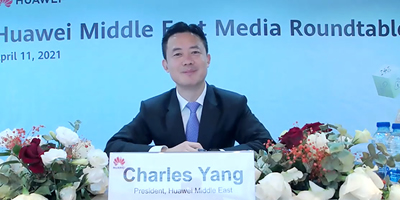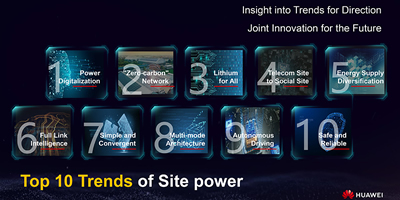Telecom Review has been invited to join the recently conducted exclusive online media roundtable hosted by Mr. Charles Yang, president of Huawei Middle East.

Reports and Coverage
Telcos take action in the fight against climate change
Climate change and telecommunications have rarely been put together in one context. However, lately, given the climate emergency that the whole world is facing, telcos are trying to leverage their assets and offer new services and solutions while taking into account the environmental impact.
Positive Technologies announces appointment of managing director in MEA and South Asia
Positive Technologies, a global cybersecurity company specializing in telecom security, announces the appointment of Santhosh Kumar as managing director to spearhead the company’s Middle East and Africa and South Asia operations.
Role of telecom operators in the innovating ‘digital age’
“Telecom operators are fundamental for the digital transformation; those are the ones that invest, build and operate the networks,” said Verena Weber, head of the telco policy unit at Organisation for Economic Co-operation and Development (OECD).
ICT will enable a more sustainable future through openness, collaborations and shared success
By Charles Yang, President of Huawei Middle East
Middle East data center market to reach $4.5 billion, 7% CAGR by 2026
According to the in-depth analysis and data-driven insights of Arizton, the Middle East data center market is expected to grow at a compound annual growth rate (CAGR) of around 7% between 2021−2026. This may lead to a $4.5 billion market size during the forecast period.
Etisalat leading the way in digital transformation
2020 has been a defining year for Etisalat with intensive transformation and agile delivery of services, ensuring a strong performance while making Etisalat well positioned for the future. The unprecedented economic headwinds caused by the pandemic have demanded agility and capabilities to quickly adapt to the present market conditions.
Global IT spending to reach $4 trillion in 2021: report
Worldwide IT spending is projected to total $4.1 trillion in 2021, an increase of 8.4 percent from 2020, according to the latest forecast by Gartner, Inc.
Technology and industry trend: Huawei launches top ten trends of site power
By Libo, VP of Site Power Section, Huawei Digital Power Middle East
What does the surge in electric vehicles mean for the ICT industry?
The use of electric vehicles as a means to cut transport emissions and ride over the fluctuating price and availability of oil is gaining momentum worldwide.

















